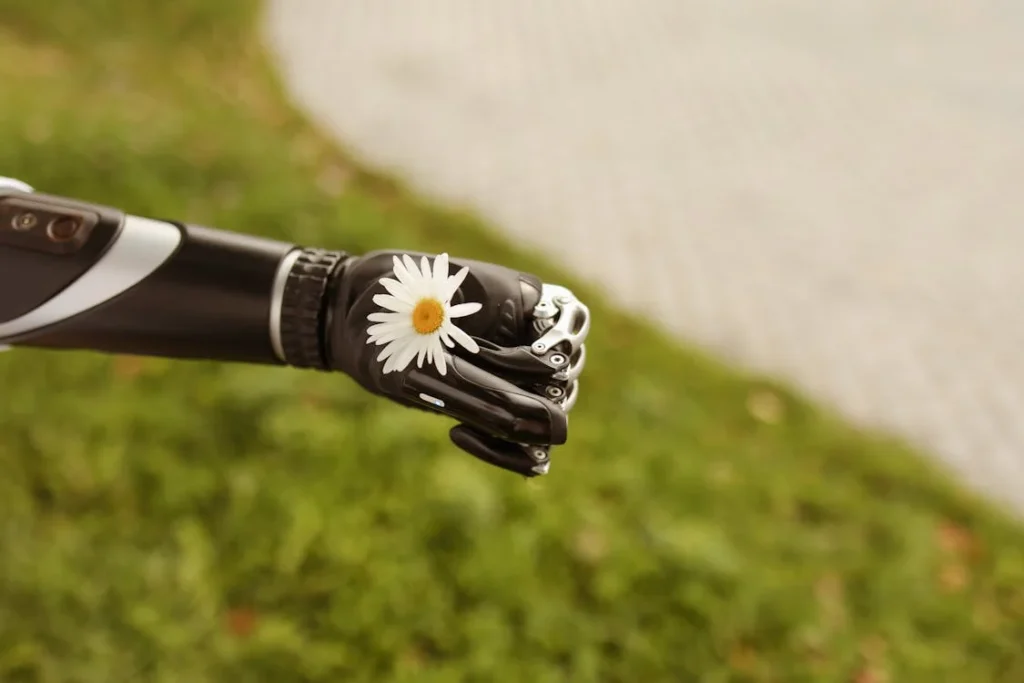Modern prosthetic hands have become more than just tools — they’re functional, adaptable, and smart. At the core of this advancement is something called “grip modes.” These aren’t just mechanical movements. They’re intuitive patterns of motion that mimic the natural ways human hands grasp, pinch, and hold. From lifting a heavy grocery bag to buttoning a shirt, grip modes make it all possible.
This article breaks down how grip modes function, why they matter, and what really goes into making them work in real life. We’ll go deep — in plain, simple language — so that by the end, you’ll understand exactly how today’s prosthetic hands are changing lives, one grip at a time.
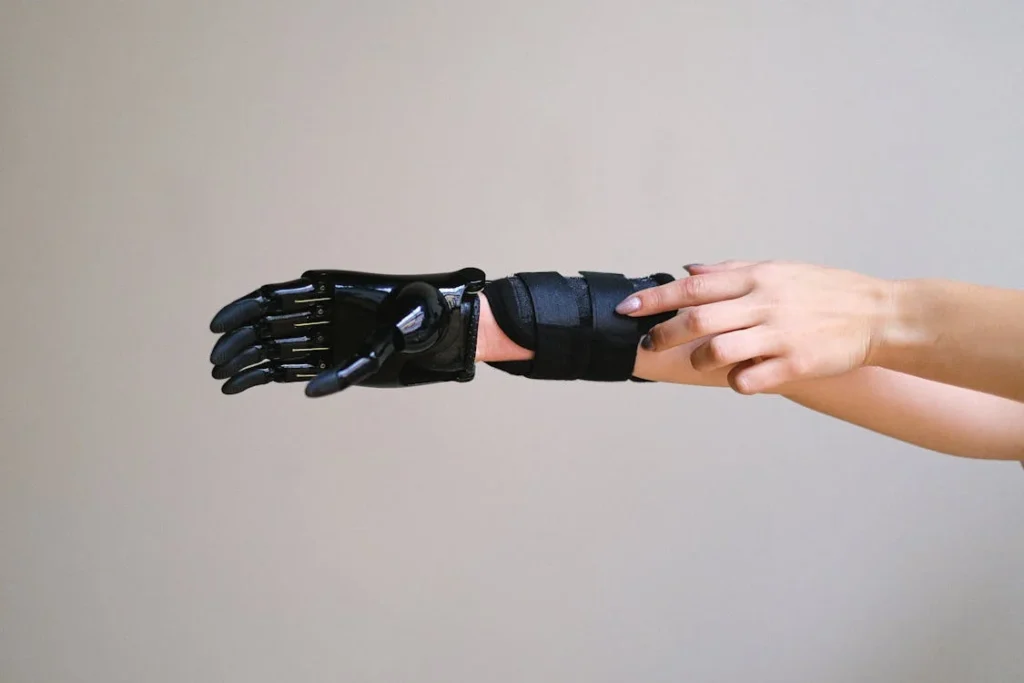
What Are Grip Modes?
The Basics Behind a Seemingly Simple Movement
Grip modes in prosthetic hands refer to pre-programmed finger and thumb movements designed to mimic natural human hand positions. Think about how your own hand knows when to squeeze, pinch, or rest.
You don’t consciously think about how each finger should move. Your brain handles that instantly. In prosthetic hands, these same actions are recreated using motors, algorithms, and muscle signals.
Each grip mode in a modern bionic hand is optimized for a different daily task. For example, the power grip wraps all fingers tightly around an object — ideal for lifting a heavy object.
The pinch grip brings the thumb and index finger together — useful for picking up a coin or threading a needle. The tripod grip, involving the thumb, index, and middle fingers, is great for holding a pen or spoon.
Then there’s the key grip, where the thumb is pressed against the side of the index finger — perfect for holding thin, flat items like ID cards or house keys.
But grip modes don’t stop at mimicking function. They offer something much more powerful: control. These preset grips allow users to respond to their environment in a way that feels natural.
Instead of struggling with a rigid prosthetic hand, users can adapt fluidly to different tasks.
Another benefit is safety. With proper grip control, users can hold delicate items like glass cups or eggs without crushing them. The hand understands how much force is needed, and that intelligence is built into each grip mode.
The goal of every prosthetic developer — including us at Robobionics — is to make the user feel like their artificial hand is truly a part of their body. Grip modes are what make that possible.
They transform a mechanical device into a responsive, useful, human-like hand that adjusts to real-world situations.
By combining biomechanics, user-friendly design, and smart software, grip modes help users do more with less effort. It’s not just about movement — it’s about independence.
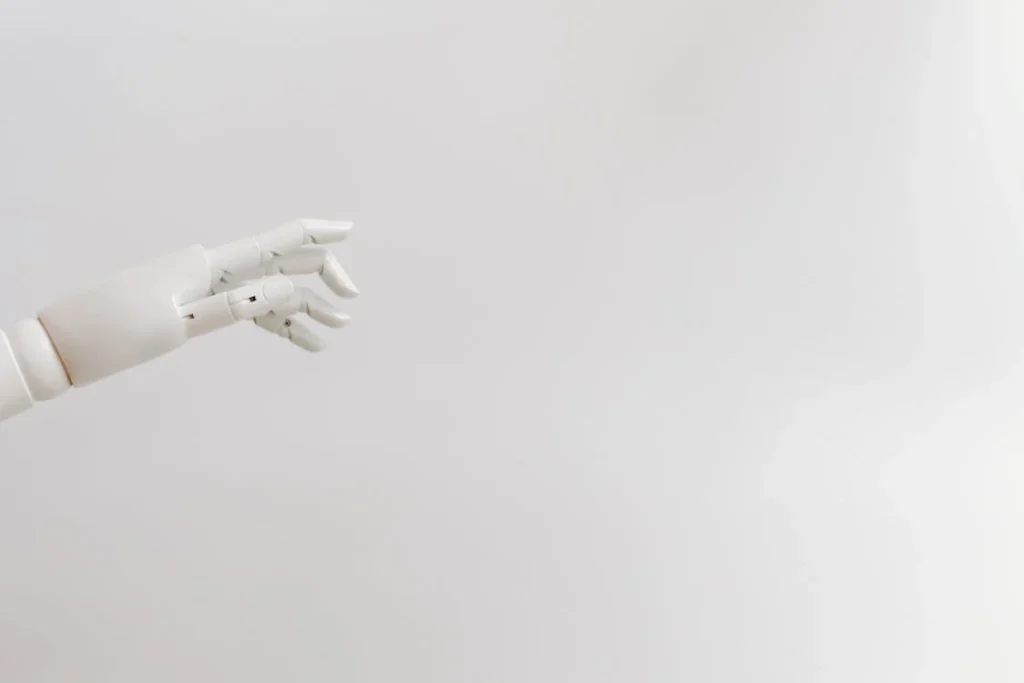
How Prosthetic Hands Switch Between Grip Modes
From Muscle Signals to Digital Decisions
One of the most fascinating parts of modern prosthetic hands is how they actually switch between grip modes. How does a user tell their prosthesis to go from a power grip to a pinch grip? It’s not magic — it’s muscle.
Most advanced prosthetic hands today are myoelectric. This means they use tiny sensors inside the prosthetic socket that detect electrical signals from the user’s muscles.
When a user tenses specific muscles — often in their residual limb — those sensors pick up the signal, which is then processed by the hand’s internal computer. The prosthesis interprets this signal and responds by activating a specific grip mode.
Let’s say a user wants to hold a coffee mug. They might contract their forearm muscle in a certain pattern, which the sensors recognize as a cue for the power grip.
Once that signal is registered, the hand closes all fingers in unison around the mug, just like a natural hand would. If they later want to tap on a phone screen, another muscle pattern might trigger a switch to the tripod grip, which aligns the fingers accordingly.
Some prosthetic hands go a step further with pattern recognition systems. These systems don’t just rely on basic muscle contractions.
Instead, they analyze the entire pattern of electrical signals — taking into account their speed, strength, and direction. This helps the prosthesis make smarter decisions. It’s like going from a remote-controlled car to a self-driving one.
Another method is gesture-based switching. In this system, a user might double-tap the side of the prosthetic or move their limb in a specific way to cycle through grip modes.
It’s subtle, easy, and doesn’t require high muscle control — which is especially useful for new amputees still adjusting to their prosthesis.
Some hands even include Bluetooth connectivity, allowing users to select grip modes via a mobile app. This offers a level of customization and fine-tuning that’s ideal for users who want to adjust speed, grip force, or even teach the prosthesis new movements.
In short, switching grip modes isn’t just about pressing buttons or flipping switches. It’s about building intuitive, fast, and safe pathways between user intent and robotic action. The more natural that process feels, the better the outcome for the user.
Why Multiple Grip Modes Matter in Everyday Life
Function, Freedom, and Fluidity
Imagine starting your day. You brush your teeth, tie your shoelaces, eat breakfast, check your phone, and unlock the front door. All of these activities involve different hand movements — and therefore, different grip modes.
Without the ability to switch between them, a prosthetic hand becomes limited, even frustrating.
Grip modes turn a prosthetic into a real working hand. They restore function in a way that’s adaptable and personalized. For example, if you’re trying to button a shirt, you’ll need precision and control — a tripod or pinch grip helps here. But if you’re picking up a shopping bag, you’ll want the strength of a power grip.
One of the most overlooked benefits of multiple grip modes is independence. A person can go from eating to working on a laptop, then open a car door, all without asking someone else for help.
That sense of freedom is priceless. It improves not only physical ability but also mental well-being and confidence.
Even social situations are easier. A natural-looking handshake is possible with a relaxed or open grip mode. Picking up a child without squeezing too hard is achievable with adaptive grip strength.
Holding a microphone during a presentation or using a stylus to sign a form — all made possible by just the right grip.
Modern prosthetic hands can store up to 10 or more grip patterns, each one designed for specific real-life scenarios. And what’s even more exciting? These modes can often be programmed or adjusted based on user preference.
Over time, the prosthetic becomes more in tune with the individual — learning their habits and adapting accordingly.
At Robobionics, our goal is to offer prosthetic solutions that don’t just “work” — they integrate seamlessly into everyday life. That’s why we focus so heavily on refining grip modes for comfort, utility, and speed. Because every second saved struggling with your hand is a second gained in living fully.
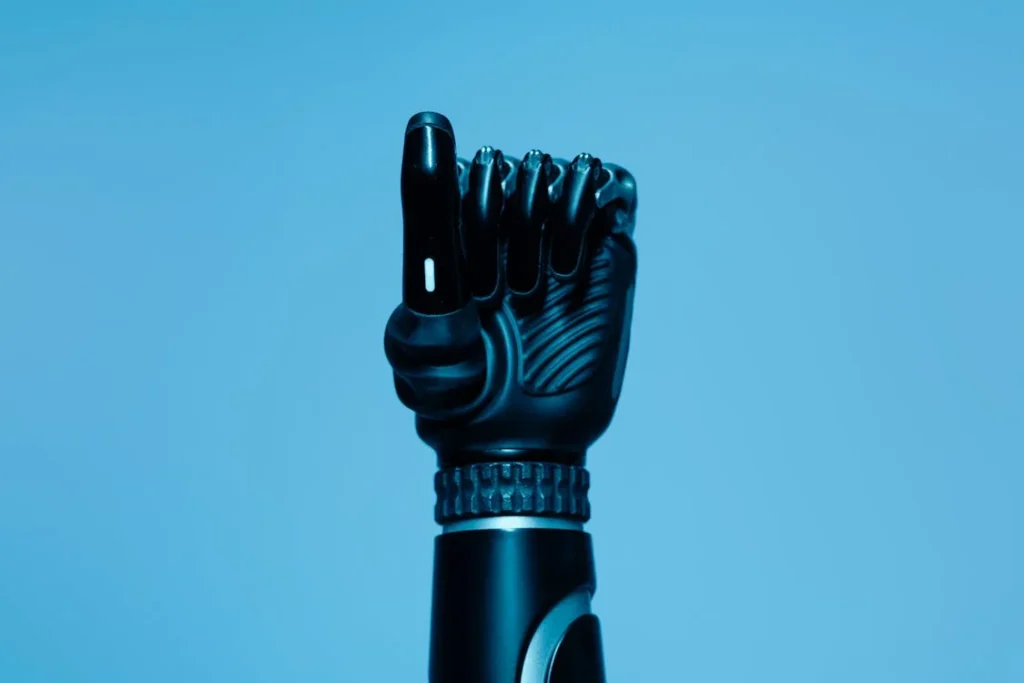
Inside the Technology That Makes It All Happen
Motors, Sensors, and Smart Engineering
Let’s peek behind the curtain. What makes grip modes technically possible inside the hand?
First, there are motors — one for each finger in advanced prosthetic hands. These tiny motors move independently to allow for detailed movements. They don’t just open and close.
They bend at different joints and angles, mimicking the biomechanics of a natural hand. This is called independent digit articulation, and it’s what allows the hand to shape itself differently for each grip.
Next comes the sensor system. These sensors do more than just read muscle signals. Some measure pressure — allowing the hand to “feel” how hard it’s holding something.
Others detect motion and position to ensure the fingers are aligned properly. In some cutting-edge models, you’ll even find tactile sensors that mimic a sense of touch. That way, the hand can adjust in real time if an object begins to slip.
All this data feeds into a central processor, often called the hand’s firmware or control unit. This is like the brain of the prosthetic. It decides which motor to activate, how fast, and how far. When a grip mode is selected, the firmware activates a specific pattern of movements and pressure levels — like a musician following sheet music.
The final piece is the power system. Advanced prosthetics are battery-powered, and engineers carefully balance energy use to get maximum life without compromising performance. Some hands even include energy-saving modes for when you’re resting.
The structure of the hand itself is also key. Lightweight but durable materials like carbon fiber and silicone offer a natural appearance and feel. The joints are designed for smooth transitions between grips — no jerky movements, no mechanical noise.
What results is a piece of technology that doesn’t feel robotic — it feels human. And that’s the ultimate goal.
Training, Learning, and Living With Grip Modes
From First Fit to Everyday Confidence
Learning to use grip modes effectively doesn’t happen overnight. It’s a journey — but one that leads to independence and control.
When a user first gets their prosthetic hand, they go through a training phase. This usually involves working closely with a prosthetist, who customizes the grip modes to the user’s needs. Together, they test different muscle signals, adjust grip sensitivity, and build muscle memory.
The user might start with basic exercises: open and close the hand, hold a sponge, lift a pencil. Over time, they try more complex tasks like tying shoelaces or using cutlery. This is where repetition becomes key. The more they practice, the more natural the grip changes become.
Many prosthetic manufacturers — including Robobionics — offer mobile apps and visual guides to support this learning process. Some even use augmented reality training tools that provide feedback in real time. Others include games that reward progress, helping users build confidence while having fun.
But learning isn’t just about motion. It’s about trusting the technology. Users often report feeling anxious during early days — worried the grip will fail or the hand will drop something.
Over time, as the hand proves itself reliable, those fears fade. It becomes second nature to reach for a fork, grab a phone, or shake someone’s hand.
One important note: training isn’t one-size-fits-all. A child learning to use a prosthetic for school will have different needs than an adult who works with tools. That’s why customization is key. Every grip mode should reflect the user’s lifestyle, priorities, and daily challenges.
In the end, a well-trained user with a properly fitted prosthetic hand and refined grip modes isn’t just functioning — they’re thriving.

Customizing Grip Modes for Individual Lifestyles
Tailoring Technology to Real People’s Needs
One of the biggest myths about prosthetic hands is that once you receive one, you’re stuck with the default settings. The truth is, modern prosthetic technology — especially when it comes to grip modes — is highly customizable. That’s not just a nice-to-have feature. It’s a necessity.
Why? Because no two prosthetic users live the same life.
Take, for instance, a corporate executive who spends much of the day typing, handling documents, shaking hands, or holding presentation clickers. Their most-used grip modes might include the tripod grip, key grip, and open palm.
Compare that to someone who works in a garage, regularly using tools or carrying heavy items. They’d rely more on the power grip, hook grip, and lateral pinch.
Then there are artists, musicians, chefs, fitness coaches, or elderly individuals with very different priorities. The key is this: a prosthetic hand should work for the person, not the other way around.
Most advanced prosthetic hands — including those developed here at Robobionics — allow grip modes to be:
- Re-ordered based on which ones are used most often.
- Renamed or color-coded in the companion app to make switching easier.
- Re-tuned to adjust speed, grip strength, and finger delay based on personal comfort.
- Deactivated if some modes aren’t needed at all.
This level of personalization makes a huge difference in adoption and satisfaction. A prosthetic user who can quickly access their most-used grips without unnecessary cycling is more likely to use the hand consistently — and confidently.
Customization also extends to sensitivity. Some users have strong residual limb muscle control and can trigger grip changes easily. Others — especially new amputees — might need softer thresholds. Adjusting this can prevent accidental mode switching or delay in reaction time.
There’s also the question of hand dominance. If someone has lost their dominant hand, their prosthesis might need more complex grips and faster reaction times. If it’s the non-dominant hand, simpler functionality might be preferred.
Ultimately, the best prosthetic hands are those that can adapt. With software updates, modular settings, and responsive design, grip modes are no longer static features. They evolve with the user — adjusting to new careers, injuries, hobbies, or health changes.
This is why, at Robobionics, we work closely with every client post-fitting — not just during the initial setup. Because real life isn’t static, and neither should your grip system be.
Common Challenges with Grip Modes — And How to Overcome Them
Real Problems, Real Solutions
Despite their incredible potential, grip modes don’t come without hurdles. As with any piece of smart technology, users can face friction in the early days — both physically and emotionally. The good news is: these problems are solvable, especially with the right support and mindset.
1. Accidental Mode Switching
One of the most common issues new users face is accidentally switching grip modes. This can happen if the prosthetic is overly sensitive to muscle signals or if the user hasn’t yet learned precise muscle control. Picture someone holding a fragile object like a wine glass, only to feel the grip tightening unexpectedly. It can be frustrating — or even dangerous.
The solution lies in adjusting sensor thresholds and training the muscle pathways more intentionally. Most prosthetists can recalibrate the hand to recognize only stronger, more deliberate contractions. Over time, users also learn to “relax” their residual limb muscles better, avoiding unintended cues.
2. Limited Memory for Grip Combinations
Some users feel overwhelmed by the number of grip modes available, or find it hard to remember how to trigger each one. This is especially true for those using gesture or position-based switching systems.
The fix? Simplify the grip menu. Instead of using ten modes, start with just three or four that match the most common tasks. Once those feel second nature, gradually add more. Additionally, apps often provide visual previews of each grip, allowing users to practice mentally before applying them in real life.
3. Grip Lag or Delay
Another concern is grip lag — when the hand takes a second too long to switch or respond. This can throw off timing, especially during fast-paced tasks like sports or work.
Grip lag can often be resolved through firmware updates, recalibrating motor speeds, or ensuring the battery is in peak condition. High-end prosthetic hands may also have a “quick mode” that cuts transition time.
4. Muscle Fatigue
Repeatedly activating grip modes using muscle contractions can cause fatigue, especially during long use. This can be discouraging for new users.
To manage this, clinicians often suggest combining physical therapy with rest cycling — alternating tasks between hands when possible. Gradual build-up of strength and endurance also improves stamina. In cases where muscle fatigue persists, gesture-based switching or Bluetooth app controls can reduce physical strain.
5. Social Self-Consciousness
Believe it or not, one of the biggest emotional challenges is fear of being stared at while switching grips. Some users worry they’ll fumble in public or draw attention.
This is why practice matters. With time, grip changes become fluid and subtle. Today’s prosthetics are quiet, responsive, and discreet. The more familiar a user is with their hand, the more natural they look — and feel — while using it.
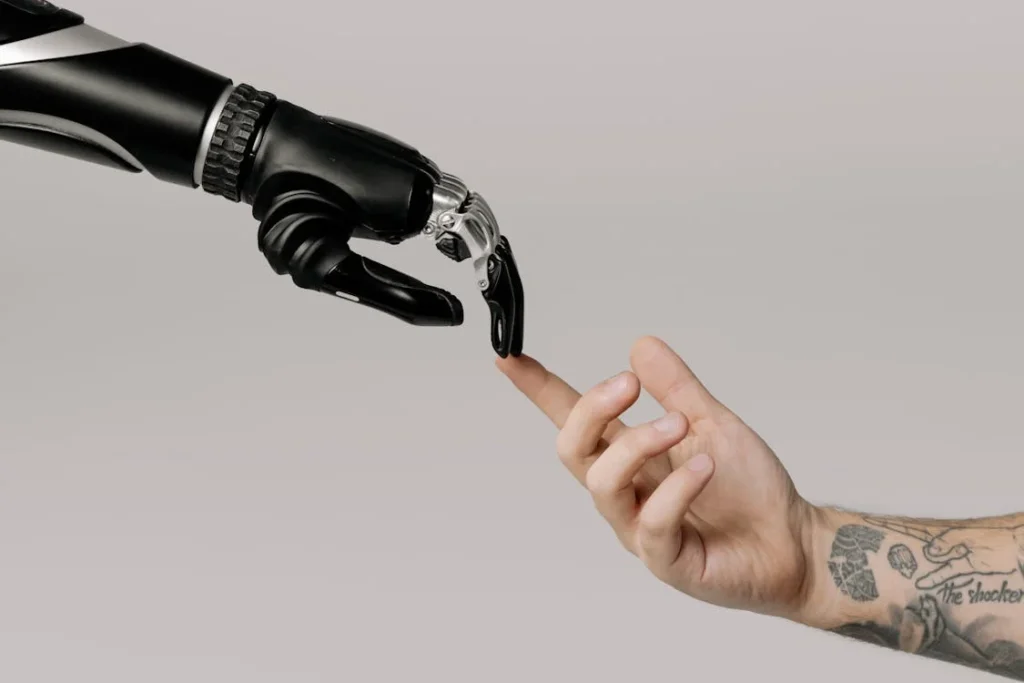
Prosthetic Hand Grip Modes in India: The Current Landscape
What Users Need to Know
India’s prosthetic landscape has made incredible strides over the past decade — and grip modes are becoming more accessible than ever. Yet, public awareness and affordability still vary by region.
In major cities like Delhi, Mumbai, Bengaluru, and Hyderabad, patients have access to world-class prosthetic centers equipped with multi-articulating hand systems. These devices come with all the bells and whistles: myoelectric control, pattern recognition, grip customization, and mobile apps. However, in semi-urban or rural areas, many users still receive mechanical hands with limited or no grip diversity.
This is where outreach and education play a crucial role.
Robobionics partners with rehabilitation clinics and limb-fitting centers across India to educate clinicians and patients alike. We’re developing prosthetic models with modular grip features — where patients can start with a few basic grip modes and upgrade over time as they grow comfortable and as budgets allow.
We also provide vernacular training guides, so that users from various linguistic backgrounds can learn grip controls without language barriers. A user in rural UP should have the same opportunity to thrive with a smart hand as someone in Gurgaon or Pune.
Affordability remains a barrier, especially for high-end hands with AI-driven grip systems. But here’s the silver lining: thanks to local innovation, smart component sourcing, and Indian manufacturing, Robobionics has cut down prices significantly without compromising quality.
Our models are designed for Indian users, Indian weather, and Indian lifestyles — meaning dust-proofing, longer battery life, and intuitive use for everything from chai cups to motorcycle handles.
Insurance coverage for prosthetics in India is still developing, and not all policies include grip-equipped devices. We actively help patients and caregivers advocate for inclusion in state disability schemes, CSR-funded programs, and hospital-based financing.
The bottom line? Grip modes are no longer a luxury. They’re fast becoming a standard expectation — and at Robobionics, we’re leading the charge to make them universal.
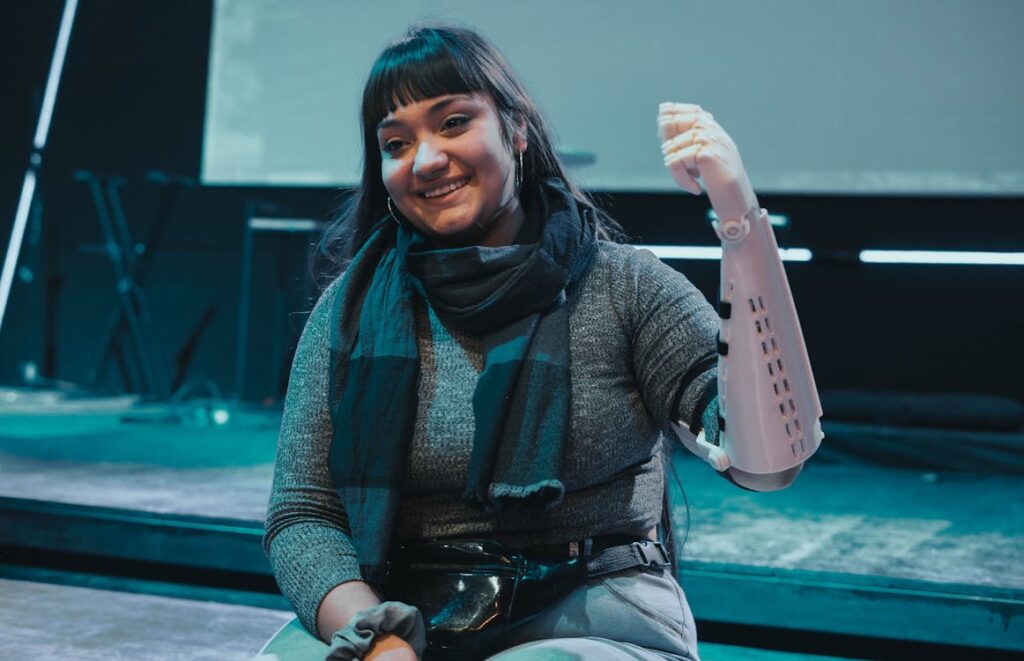
How Caregivers and Families Can Support Grip Mode Use
Empathy, Encouragement, and Everyday Help
While prosthetic technology continues to advance, one factor remains constant in every successful journey: human support. Behind every prosthetic user — whether they’re a child, adult, or senior — is often a caregiver or family member who plays a key role in helping them adapt.
Caregivers can be instrumental in the learning phase. For example, they can assist with practice sessions by observing when grip modes change, giving feedback on timing, or gently correcting mistakes. Even holding everyday items like spoons, phones, or books during practice can build a safe, relaxed learning space.
One powerful way caregivers can help is by encouraging positive reinforcement. Every small success — whether it’s opening a jar or picking up a spoon — deserves recognition. This builds confidence, which is vital for long-term prosthetic use.
They can also help with the technical side of things. Learning how to use the app, update firmware, or recalibrate grip modes may be difficult for users with limited tech familiarity. A tech-savvy family member can become the bridge between the user and their device, ensuring everything runs smoothly.
In some cases, especially with young children or elderly users, caregivers can keep track of:
- Battery life and reminders to charge the hand.
- Cleaning and hygiene, especially if the hand is exposed to sweat, food, or dust.
- Appointments for grip tuning, firmware updates, or socket adjustments.
Emotional support is equally critical. Many users go through phases of frustration, especially when they’re unable to activate the right grip quickly or when the hand doesn’t behave as expected. Being patient, non-judgmental, and supportive through those moments makes a world of difference.
Lastly, caregivers can be powerful advocates. They can help request better prosthetic models, speak with prosthetists on behalf of the user, or seek community support and grants to access higher-end hands with enhanced grip modes.
Grip modes empower prosthetic users. But behind every empowered user is a caregiver or loved one who helps them believe that such empowerment is possible.
Conclusion
We’ve come a long way — but we’re not done yet.
The future of grip modes is moving toward more personalization and intelligence. Advances in artificial intelligence are enabling prosthetic hands to learn user behavior. This means your hand might recognize you’re reaching for your coffee mug every morning and preemptively shift to the right grip. That level of prediction can make movement feel even more natural.
There’s also exciting work in neural control — where brain signals are captured directly, skipping muscle input entirely. This would allow for even faster grip changes and more fluid motion. Some early clinical trials have shown promising results.
Haptic feedback is another frontier. By delivering tiny vibrations or pulses to the residual limb, a prosthetic can mimic the feeling of touch. Users can tell whether they’re squeezing something too hard, or if a surface is smooth or rough. That kind of sensory feedback is a game-changer for grip confidence.
And finally, accessibility is improving. At Robobionics, we’re investing in affordable grip mode technology so that these life-changing features are available not just in big cities, but in rural areas across India as well. We believe everyone deserves access to prosthetics that don’t just work — but work brilliantly.



